
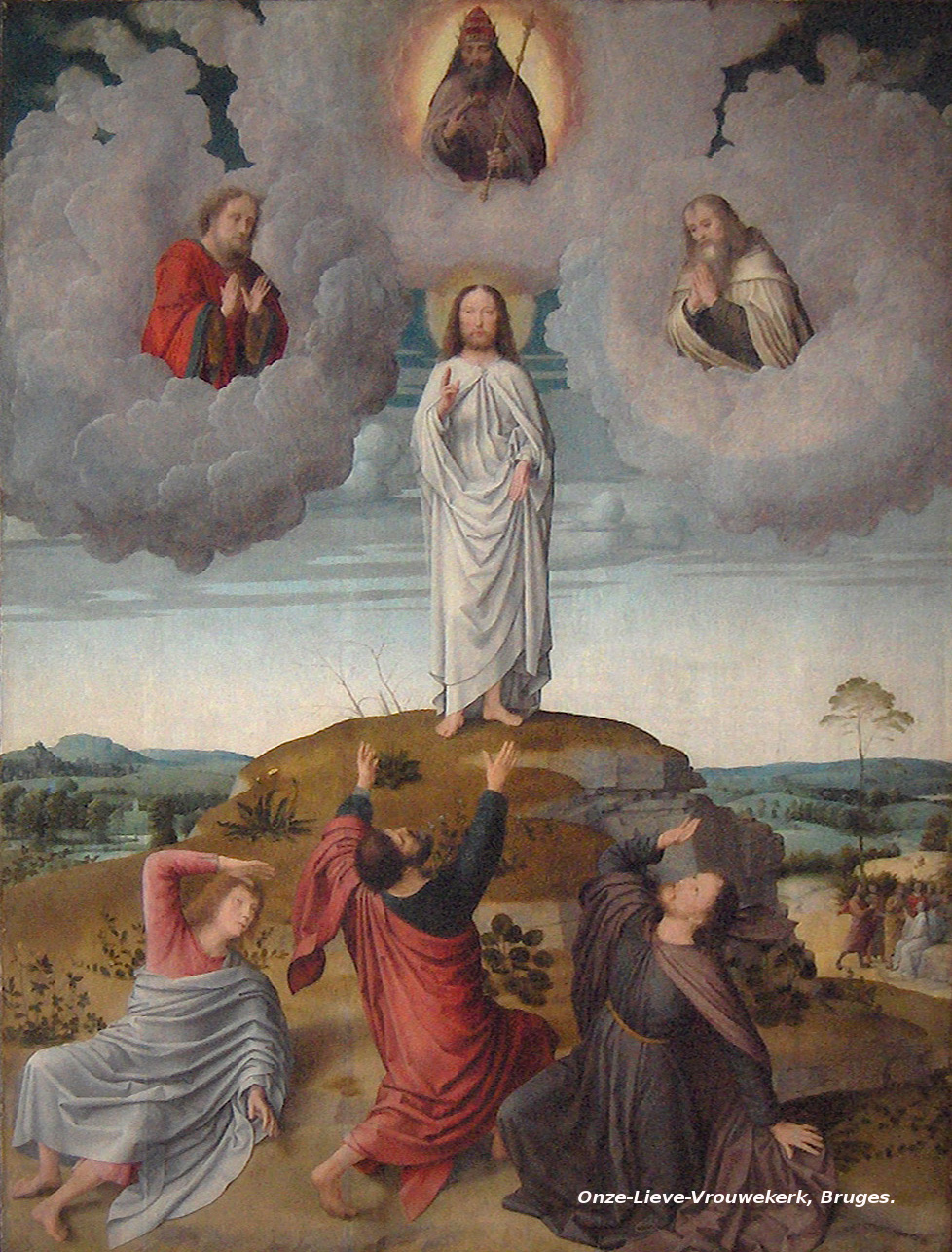 Sacred Scriptures teach us that no one is capable of looking at the face of the living God and continue to live. For this reason the face and the glory of God were revealed to us finally in and through Jesus Christ, the perfect image of the Father. Although while on earth Jesus Christ chose to withold his glory, he revealed the brilliance of this glory to us “by anticipation in his Transfiguration (Lk 9, 31f).” [2]
Sacred Scriptures teach us that no one is capable of looking at the face of the living God and continue to live. For this reason the face and the glory of God were revealed to us finally in and through Jesus Christ, the perfect image of the Father. Although while on earth Jesus Christ chose to withold his glory, he revealed the brilliance of this glory to us “by anticipation in his Transfiguration (Lk 9, 31f).” [2]
For this reason, the message of the Transfiguration mystery can only be understood in the light of the hymn which we find in the letter to the Philippians which speaks about the kenosis of Jesus Christ. The Transfiguration is “a momentary anticipation of what the hymn describes: ‘Therefore God has exalted him…’; but he had ’emptied himself, taking the form of a servant, being born in the likeness of men.’ This was a fleeting, but remembered, glimpse of the glorified Christ.” [3]
The Transfiguration of Our Lord is an important motif in the development of the spirituality of Carmel from the 14th century onwards. John Baconthorpe (+1348c.) interprets the white mantle or cloak of the Carmelites as the sign of grace and of the glory of the resurrection. Baconthorpe stresses the fact that as Carmelites we are to follow “what the apostle says: ‘Let us then cast off the works of darkness and put on the armour of light’ (Rom 13,12).” [4] To support his spiritual interpretation of the white cloak, Baconthorpe makes reference to the account of the Transfiguration as an anticipation of the Resurrection which we find in the Gospels:
Carmelites reveal in their habit the grace and the glory of the resurrection so much so that grace and the glory of the resurrection are proclaimed with angels, who pass by in white vestments, or rather as it is written, literally stand: “They stand near them in white vestments”. In fact this was so in the ascension. Luke says: “Two men were near them in shining clothes”. Matthew speaks of how the angels who rolled back the tombstone sat upon it, and their clothes were like snow. Mark says also: “They saw a young men sitting on their right hand side, covered with a white long robe”… Also in his transfiguration, Christ appeared in his divinity shining over the darkness of humanity, when his face was brighter than the sun, and his clothes became as white as snow. For this reason, the mystical habit of the Carmelites and the mantle is carried puposely over the darkness of humanity to show the glory of the resurrection. In this transfiguration, Elijah, the father of Carmelites appeared together with Moses as witnesses to the Law and to prefigure the splendour of mystical grace. [5]
In this text the Transfiguration, Resurrection and Ascension are unified together in the theme of grace and glory. Indeed “The Transfiguration of Christ emphasizes precisely the glorious destiny which awaits those who go through the ‘exodus’ of death.” Accordingly, in the Lucan version (Lk 9, 28-36) [6], during the Transfiguration, Jesus spoke about his future passion and death which was to take place in Jerusalem a few weeks later. Only those who participate in the kenosis of Jesus could in fact enjoy the splendour of mystical grace. Identification with Christ implies accepting “a code of conduct fashioned on the kenosis“. [7]
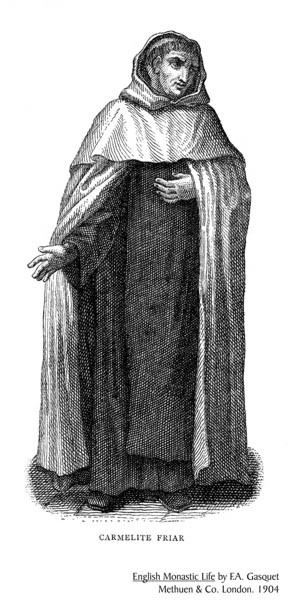 It is in this light that one has to interpret what John Baconthorpe says in the above quote about the white mantle which is an integral part of “the mystical habit of the Carmelites”. The white mantle is “carried puposely over the darkness of humanity” which is represented by the dark colour of the habit, “to show the glory of the resurrection.” The dark colour of the Carmelite habit represents a life of ascesis and conversion, which reminds us of this participation in the kenosis of Christ, whilst the white mantle stands for the glory of the resurrection.
It is in this light that one has to interpret what John Baconthorpe says in the above quote about the white mantle which is an integral part of “the mystical habit of the Carmelites”. The white mantle is “carried puposely over the darkness of humanity” which is represented by the dark colour of the habit, “to show the glory of the resurrection.” The dark colour of the Carmelite habit represents a life of ascesis and conversion, which reminds us of this participation in the kenosis of Christ, whilst the white mantle stands for the glory of the resurrection.
At this point one could not fail to mention the fact that in the chapters of book 5 of The Institution, which speak about the conversion of the hermits, we find that the sons of the prophets (i.e. Carmelites) “inquired what person or time was indicated by the Spirit of Christ within them when it fortold the sufferings of Christ and the glories that would follow.” This direct quote taken from 1 Pt 1. 10-12. is applied to the hermits who were supposedly baptised by John the Baptist in the waters of Jordan in the same day Jesus was baptised. To these hermits and to the people present, John presented Jesus as the lamb of God who takes away the sins of the world. A detailed account of the Gospel narrative on the Baptism of Christ is given in The Institution, with special emphasis on the words spoken by John the Baptist and to the solemn declaration of the Father: “This is my beloved son”.
Indeed the “Theophanies of the Baptism and the Transfiguration are momentary; the kenosis is a vast curtain or canopy covering so much that we should wish to see unveiled.” [8] The 1995 Constitutions in fact express this participation of the Carmelite in the mystery of Christ by stating that the basis of the spiritual journey of the Carmelite is to be transformed in the self-emptied crucified Christ. [9] Peter Serracino-Inglott speaks of the relationship between the Transfiguration, Baptism and participation in the self-emptying of Christ,events which reveal to us the mystery of Christ:
The Transfiguration on the Mountain is the other side of a ritual diptych of which the complementary side is the baptism in the Jordan…There can be no doubt that, in the Baptisimal scene, the words of the Father are intended as a quotation from Isaiah (42,1). The use by the LXX of the word “pais” (which like “puer” in Latin, or “garçon” in French, can mean both “son” and “servant”) explains the transition from ebed (servant) in the Hebrew to uios (son) in the Gospels. The point of the utterance is clearly to identify Jesus as the Suffering Servant who, according to the prophet, was “to march to death bearing the sins of all”…Now an aspect of the Suffering Servant is his ” beautilessness, his lack of splendour” (53, 7) which is a consequence of his suffering and conceals the beauty and splendour which will appear at the reversal of death. The repetition in both contexts of the same identifying words of the Father serves to emphasize that the two scenes prefigure the two sides of the same event: the veiling and the unveiling of the Beauty as well as the concealing and the revealing of the divine Power of the Son by the action of the Holy Spirit who appears under the signs of the dove and of the cloud in the two scenes respectively…true Beauty is attainable only through its apparent negation, i.e. the disfigurement of suffering and death. [10]
This spirituality of self-emptying and glorification, was experienced by all the great spiritual masters of the Carmelite tradition, each of whom gave particular nuances to the same mystery. In the following pages I shall consider some examples from various mystics to illustrate the way this mystery was lived by each of them.
In his writings the mystical doctor John of the Cross teaches us the what and the why of the mystical experience, understanding this experience from the perspective of divine union. [12] John of the Cross expresses the exchange of love between the soul and Christ through the lyric verses of The Spiritual Canticle. According to Kieran Kavanaugh, O.C.D., the Canticle may be divided into three parts: 1) The Search for the Beloved (stanzas 1-12); 2) Preparations for Perfect Union (stanzas 13-21); and 3) Full Union (stanzas 22-40). [13] What interests us most here is the third part of the Canticle, mainly the last stanzas which speak about the desires for the vision of glory. In stanza 36 of Canticle B (CB) of St. John of the Cross, the bride longing for the beatific vision after having experienced what is called the spiritual marriage with the Beloved, says to the Bridegroom:
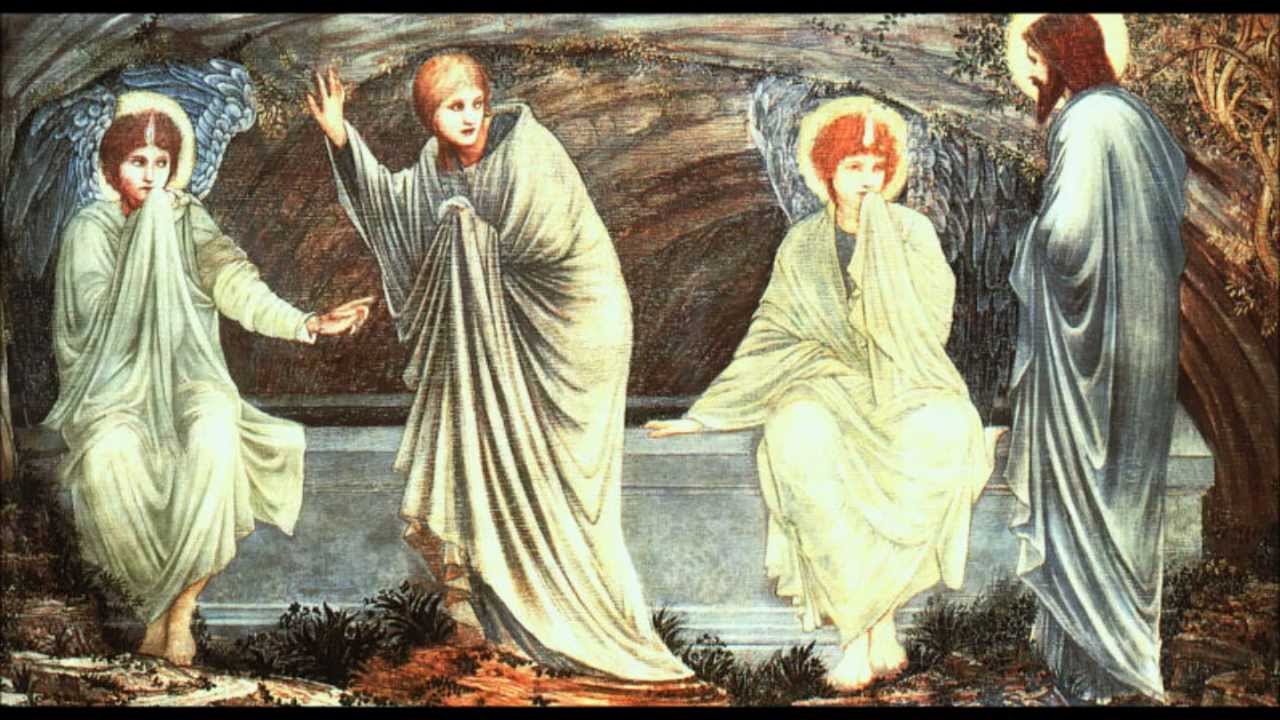
Let us rejoice, Beloved,
and let us go forth to behold
ourselves in your beauty,
to the mountains and to the hill,
to where the pure water flows,
and further, deep into the thicket. [14]
In his commentary on this particular stanza John of the Cross specifies that the bride expresses three desires. She asks from her Beloved three things to be given to her:
First, she desires to receive the joy and the savor of love, which is what she asks for in saying, “Let us rejoice beloved.” Second, she desires to become like the Beloved, and she asks for this in stating, “And let us go forth to behold ourselves in your beauty.” Third, she desires to look closely at and know the things and secrets of the Beloved himself, which is what she requests in saying, ” And further, deep into the thicket.” [15]
After practising love even through the performance of “works directed to the service of the Beloved” [16], the soul wishes “to resemble the Beloved more”.[17] For this reason John of the Cross puts these words on the bride’s lips: “Let us go forth to behold ourselves in your beauty to the mountains, and to the hill”. [18] Could it be that in composing this verse to express his mystical experience of the beauty of God, John of the Cross consciously or unconsciously had in mind the Gospel narratives of the Transfiguration of Our Lord? In commenting this verse, John of the Cross forgetting the reader of the commentary and concentrating on his Beloved, says:
That I be so transformed in your beauty, that we may be alike in beauty, and both behold ourselves in your beauty, possessing then your very beauty; this, in such a way that each looking at the other may see in the other their own beauty, since both are your beauty alone, I being absorbed in your beauty; hence, I shall see myself in you in your beauty, and you will see yourself in me in your beauty; that I may resemble you in your beauty, and you resemble me in your beauty, and my beauty be your beauty and your beauty my beauty; wherefore I shall be you in your beauty, and you will be me in your beauty, because your very beauty will be my beauty; and thus we shall behold each other in your beauty. [19]
The participation in the beauty of the Son of God is possible only because of the adoptive sonship given to us through Jesus Christ. In him, through him and with him we are children of God. What he holds by essence we have by participation in his life. This participation in the beauty of the Bridegroom (i.e. the Son of God) will be granted fully to the Church, the mystical body of Christ “on the day of her triumph, when she sees God face to face.” [20]
In order to arrive at this transformation in the beauty of the Beloved, it is necessary for the bride to be transformed into the Wisdom of God, represented metaphorically in stanza 36 of the Spiritual Canticle by the mountains and the hill. However the soul must also pass deep into the thicket of suffering.
This thicket into which the soul thus wants to enter also signifies very appropriately the thicket and multitude of trials and tribulations, for suffering is very delightful and beneficial to her. Suffering is the means of her penetrating further, deep into the thicket of the delectable wisdom of God. The purest suffering brings with it the purest and most intimate knowing from further within. Not being content with just any kind of suffering, she insists: “And further, deep into the thicket,” that is, even the agony of death in order to see God. [21]
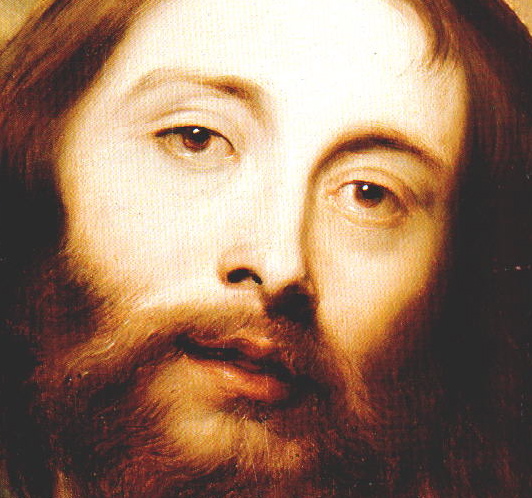 One must remember that John of the Cross does not speak of suffering for the sake of suffering itself, rather he speaks of suffering out of love of God. [22] The mystical doctor addresses the fortunate souls who abandon themselves to God in the journey towards perfection. To abandon the self in God’s hands is to let God take over, allowing him to pour himself, his Spirit in us to transform us. “Abandonment is experienced subjectively as the fire of Hell, but from God’s perspective it is the fire of Purgatory.” [23] For John of the Cross, God purifies us in order to make us gods by participation. All his writings emphasize the return of humanity to God through Jesus Christ, a return which implies a radical transformation in a new creature to the point of full divinisation. [24]
One must remember that John of the Cross does not speak of suffering for the sake of suffering itself, rather he speaks of suffering out of love of God. [22] The mystical doctor addresses the fortunate souls who abandon themselves to God in the journey towards perfection. To abandon the self in God’s hands is to let God take over, allowing him to pour himself, his Spirit in us to transform us. “Abandonment is experienced subjectively as the fire of Hell, but from God’s perspective it is the fire of Purgatory.” [23] For John of the Cross, God purifies us in order to make us gods by participation. All his writings emphasize the return of humanity to God through Jesus Christ, a return which implies a radical transformation in a new creature to the point of full divinisation. [24]
“It is that experience of meeting the eyes of someone who sees through us, but does not despise us, and whose eyes hold out the possibility of becoming more than we are. He does not simply look at the beautiful; his look makes a person beautiful.” [25] This gaze of God on the created order “cleanses, makes beautiful, enriches and enlightens” [26] because God sees creation only in his Son. “Creation has a Son-like colour, a Son-like shape which the Son alone could fill.” [27] John of the Cross therefore sees creation as something beautiful and good, identifying it with his Beloved. The created order in fact helps us to discover the face of the glorified risen Christ, [28] however only when creatures are known through God, when the beauty of the world is rediscovered through the beauty of God. [29]
Divinisation is only possible through conformity with the Word, the perfect image of the Father, the Son of God through whom the world was created and who reflects the glory of God and bears the very stamp of his nature, upholding the universe by his word of power (Hb 1, 2-3). [30] Jesus Christ is the perfect and beautiful image of God. To arrive at this transformation in this perfect and beautiful image, the journey through suffering is inevitable inasmuch as sin disfigured in us this original image. To reflect again the glory of God we have to participate in the Paschal mystery of Christ journeying in the of the nada of the cross. It is through this mystery of “the Incarnation of his Son and through the glory of his resurrection according to the flesh”, [31] that the Father beautified creatures and “clothed them entirely in beauty and dignity. [32] It is through the “thicket of the cross…which is narrow, and few desire to enter by it” [33] that the soul is re-formed in the image of the Son through the de-construction of the disfigured form by sin. De-construction leads to the final transformation in the beauty of the Beloved.
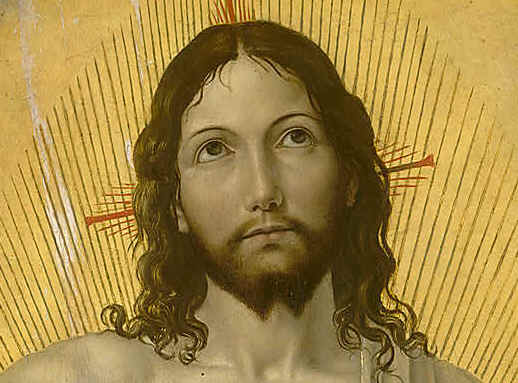 In the Ascent of Mount Carmel, John of the Cross in fact tries to attract our attention towards the “counsel of our Saviour on self-denial,” [34] to avoid falling into the trap of seeking the self in God. [35] This is nothing more than a negation “similar to a temporal, natural and spiritual death…For on this road there is room only for self-denial (as our Savior asserts) and the cross. The cross is a supporting staff and greatly lightens and eases the journey” [36] to a holiness which:
In the Ascent of Mount Carmel, John of the Cross in fact tries to attract our attention towards the “counsel of our Saviour on self-denial,” [34] to avoid falling into the trap of seeking the self in God. [35] This is nothing more than a negation “similar to a temporal, natural and spiritual death…For on this road there is room only for self-denial (as our Savior asserts) and the cross. The cross is a supporting staff and greatly lightens and eases the journey” [36] to a holiness which:
has no other origin except the imitation of Christ, the total stripping away of everything, the following of the evangelical counsels, the affirmation of everything that the man of this world experiences as a renunciation of the aesthetic, dissatisfaction with all this-worldly, creaturely delights and with all enjoyment of them, whether intentional or unintentional, sinful or lawful…to be an authentic witness, in the Holy Spirit, to the bridal love of Christ and the Church, of God and the world on the Cross. [37]
Like The Spiritual Canticle, the Living Flame of Love deals also “with the same high degree of perfect union with God, the spiritual marriage, total transformation in the Beloved.” [38] This transformation is the action of the Trinity in the soul, with “each divine Person bestowing a gift that produces a distinct effect.” [39] The delightful wound which kills the old self, and enables the soul to put on the new self, is produced by the action of the Holy Spirit, the delicate touch of splendour and glory is the Son, whilst transformation of the soul occurs by the action of the Father who gives himself bountily. [40] Already from this life, the soul is glorified with a gentle and powerful glory, even though the direct vision of God’s glory is not possible in this life. [41]
The Living Flame of Love evolves around the reality of participation in the glory of the Lord, with the soul sharing in the innumerable attributes of God, the “lamps of fire”. [42] “God glorifies the soul that the soul may glorify Him. After having been buried in the “sepulchre of dark death”, the soul is now absorbed in the intimate life of God, its “palate all bathed in glory and love.” [43] Thus John of the Cross expresses the climax of this mystical experience of union with God and transformation in his attributes through love in these terms:
O lamps of fire!
in whose splendors
the deep caverns of feeling,
once obscure and blind,
now give forth, so rarely, so exquisitely,
both warmth and light to their Beloved.
How gently and lovingly
you wake in my heart,
where in secret you dwell alone;
and in your sweet breathing,
filled with good and glory,
how tenderly you swell my heart with love. [44]
[2] JOHN L. MCKENZIE, S.J., Glory,in Dictionary of the Bible, London 1992, 314.
[3] MICHAEL O’ CARROLL, C.S.SP., Transfiguration, the, in Verbum Caro. An Encyclopedia on Jesus, the Christ, Collegeville/MN 1992, 187.
[4] JOHN BACONTHORPE, Laus Religionis Carmelitanae VI, 2 : MCH, 251.
[5] Ibid., 249-251: “Carmelitae ostendunt in habitu gratiam et gloriam resurrectionis, tam gratiam quam resurrectionis gloriam praecinentes cum angelis, qui leguntur in albis sedentes, vel potius, secundum litteram, assistentes, quia scribitur: ‘Astiterunt iuxta illos in vestibus albis’. Sed hoc fuit in ascensione. Lucas vero ait: “Duo viri steterunt iuxta illos in veste fulgenti” Mattheus tamen dicit quod angelos revolvens lapidem sedebat super eum, et vestimenta eius sicut nix. Marcus etiam ait: ‘Viderunt iuvenem sedentem a dexteris, coopertum stola candida’…Cum etiam ipse Christus transfiguratus est, super umbram humanitatis suae claritas apparuit deitatis, quia resplenduit facies eius sicut sol, et vestimenta eius facta sunt alba sicut nix, ac si mysticae habitum Carmelitarum et cappam pro tempore, quasi super umbram «humanitatis» gloriam resurrectionis praemonstrando, baiularet. In ipsaque transfiguratione pater Carmelitarum Elias cum Moyse apparuit velut Legis testes, et gloriam ac splendorem Gratiae mysticae praefigurantes.”
[6] PETER SERRACINO -INGLOTT, “The Beautiless”. Reflections on a theme in one of Therese of Lisieux’s Last Conversations, in Carmelus 20/I, 24.
[7] MICHAEL O’ CARROLL, C.S.SP., Kenosis, Self-Emptying of Christ, the, in Verbum Caro, 91.
[8] Ibid., 90.
[9] Constitutions, 15.
[10] PETER SERRACINO -INGLOTT, “The Beautiless”, 23-24.
[11] JOHN OF THE CROSS, Spiritual Canticle (CB) XXXVI: CWJC, 80. Hereafter CB.
[12] SANTIAGO SEBASTIÁN, Contrarreforma y barroco. Lecturas iconográficas e iconológicas, with an introduction by Alfonso Rodríguez G. de Ceballos, Madrid 1981, 76-81.
[13] Introduction to the Spiritual Canticle: CWJC, 468.
[14] Ibid.: Gocémonos, Amado,/y vámonos a ver en tu hermosura/al monte y al collado/do mana el agua pura;/entremos más adentro en la espesura.
[15] CB XXXVI, 3: CWJC, 611.
[16] CB XXXVI, 4: CWJC, 611.
[17] Ibid.,611.
[18] CB XXXVI: CWJC, 80.
[19] CB XXXVI, 5: CWJC, 611-612. For the beauty of the text itself, I shall give the original version as published in Vida y Obras de San Juan de le Cruz doctor de la Iglesia Universal, edited with introduction and notes by Lucinio del SS. Sacramento, O.C.D. – Matias del Niño Jesus, O.C.D. (=Biblioteca de Autores Cristianos 15/IV) Madrid 1955, 1090.:esto es que de tal manera esté yo transformada en tu hermosura, nos veamos entrambos en tu hermosura, teniendo ya tu misma hermosura; de manera que mirando el uno al otro, vea cada uno en el otro su hermosura, siendo la una y la del otro tu hermosura sola, absorta yo en tu hermosura; y así te veré yo a ti en tu hermosura, y tú a mí en tu hermosura, y yo me veré en ti en tu hermosura, y tú te verás en mí en tu hermosura; y así parezca yo tú en tu hermosura, y parezcas tú yo en tu hermosura, y mi hermosura sea tu hermosura y tu hermosura mi hermosura; y así seré yo tú en tu hermosura, y serás tú yo en tu hermosura, porque tu misma hermosura será mi hermosura; y así nos veremos el uno el otro en tu hermosura.
[20] CB XXXVI, 5: CWJC, 612.
[21] Ibid., CB XXXVI, 12: CWJC, 613-614.
[22] MAX HUOT DE LONGCHAMP, Saint Jean de la Croix. Pour lire le Docteur Mystique, Paris 1991, 49.
[23] HANS URS VON BALTHASAR, The Glory of the Lord. A Theological Aesthetics, III: Studies in Theological Style: Lay Styles, translated by Andrew Louth – John Saward – Martin Simon, edited by John Riches, San Francisco 1986, 111.
[24] LUIGI BORRIELLO – GIOVANNA DELLA CROCE, Conoscere Dio è la vocazione dell’uomo. Linee di antropologia mistica in San Giovanni della Croce, with an introduction by Alvaro Huerga, Milano 1991, 163.
[25] IAIN MATTHEW, The Impact of God. Soundings from St. John of the Cross, London 1995, 112.
[26] Ibid., 112.
[27] Ibid., 30.
[28] LUIGI BORRIELLO – GIOVANNA DELLA CROCE, Conoscere Dio, 175.
[29] BALTHASAR, The Glory of the Lord. A Theological Aesthetics, III, 150-152.
[30] Ibid., 167.
[31] CB V, 4: CWJC, 497.
[32] Ibid.
[33] CB XXXVI, 13: CWJC, 614.
[34] The Ascent of Mount Carmel II, 5: CWJC, 170. Hereafter Ascent.
[35] Ibid.
[36] Ascent II, 6-7: CWJC, 170-171.
[37] BALTHASAR, The Glory of the Lord. A Theological Aesthetics, III, 126-127.
[38] NORBERT CUMMINS OCD, Freedom to Rejoice. Understanding St. John of the Cross, London 1991, 179.
[39] Ibid., 181.
[40] The Living Flame of Love III, 16-17, 32-33: CWJC, 670. Hereafter Living Flame.
[41] CUMMINS, Freedom to Rejoice, 181.
[42] Ibid., 184.
[43] Ibid., 184.
[44] Living Flame III, IV: CWJC, 52-53. For the sake of savouring the beauty of this poem, I shall give the original in Spanish: “¡Oh lamparas de fuego,/en cuyos resplandores/las profundas cavernas del sentido,/que estaba oscuro y ciego,/con extraños primores/calor y luz dan junto a su Querido!/ ¡Cuán manso y amoroso/ recuerdas en mi seno,/donde secretamente solo moras,/y en tu aspirar sobroso,/de bien y gloria lleno,/cuán delicadamente me enamoras!”
Go Ahead, Leave A Comment